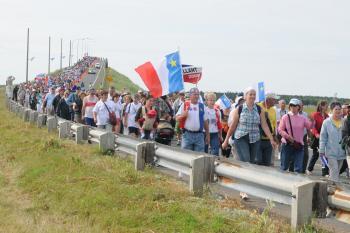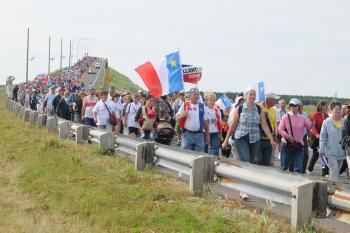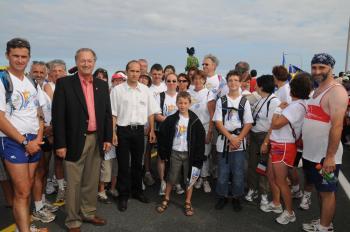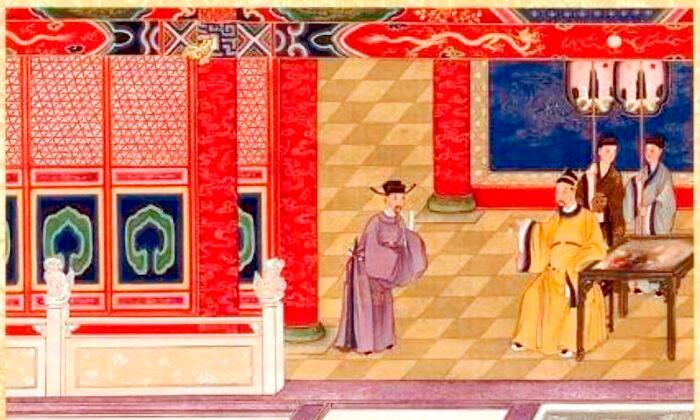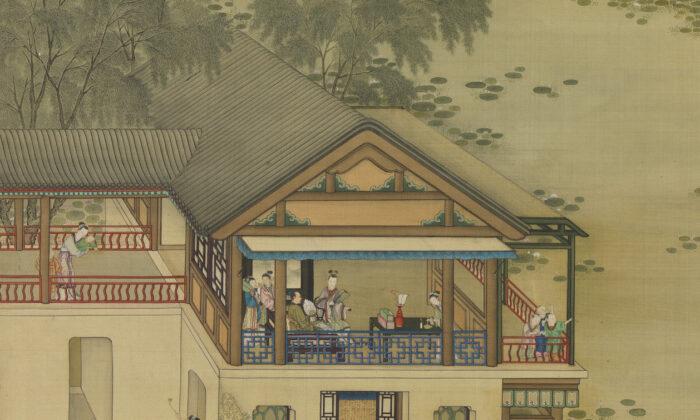It has been called the Olympics of culture in French communities.
The fourth World Acadian Congress (Congrès mondial acadien), which runs from Aug. 7 to 23 in the Acadian Peninsula of northeast New Brunswick, is a gathering of Acadian people from around the world that’s held every five years.
An estimated 40,000 Acadians, the descendants of French colonists who settled in Atlantic Canada beginning in the early 1600s, are attending the two-and-a-half week event to renew their bonds while they commemorate their history and celebrate their culture.
Hundreds of planned activities include family reunions, concerts, village festivals, tours, workshops, exhibits, and conferences.
James Moore, federal Minister of Canadian Heritage and Official Languages, spoke at the opening ceremony in Shippagan last Friday.
The following day in Caraquet, Secretary General of la Francophonie Abdou Diouf unveiled a street named in his own honour.
Governor General Michaëlle Jean on Wednesday attended the Grand rassemblement jeunesse 2009 in Tracadie-Sheila, a gathering of youth to pay tribute to Acadian history and culture.
On Friday the GG will be in Moncton at the raising of the Acadian flag on the eve of National Acadian Day, and to host a youth dialogue on arts as a tool to promote peace and solidarity.
“It’s mainly celebration, family gatherings, and reflective moments,” said Jean-Marie Nadeau, president of the Moncton-based Acadian Society of New Brunswick (la Société de l'Acadie du Nouveau-Brunswick), who came up with the idea of the congress 21 years ago.
Back in 1988, Mr. Nadeau was secretary general of the National Society of Acadians (la Société Nationale de l'Acadie).
At the time he thought, “why don’t we do like the Armenian people, or the Palestinian or the Jewish people, and launch an international call saying ‘let’s get together and decide together what we want to do to assure our perennity.’ That’s how it came about,” he said.
A Tragic Story of Expulsion
A much-anticipated moment for reflection will take place Aug. 16 at an event featuring award-winning author and Yale University historian John Mack Faragher.
Mr. Faragher will discuss the subject of his book published in 2005, “A Great and Noble Scheme: The Tragic Story of the Expulsion of the French Acadians from their American Homeland.”
It is a dark episode that Acadians call le Grand Dérangement, or the great upheaval.
In 1755, at the start of the Seven Years’ War between Britain and France, Acadia was under British rule and British authorities demanded that the Acadians swear an oath of allegiance to the British Crown that would require them to fight against their own French countrymen.
Most of the Acadians refused, and more than 10,000 were forcibly deported.
Many were sent to English-speaking colonies to the south, while others were expelled to France. Thousands were killed, some from drowning when their boats sank. Families were torn apart, and homes and property were burned and confiscated.
Mr. Faragher’s book highlighted the horrific and planned nature of the deportation and its parallels with modern-day ethnic cleansings that have occurred in places like Rwanda and Yugoslavia.
After the war ended in 1763, some of the Acadians returned to Atlantic Canada, while others established new homes across North America, Europe, and elsewhere. Many settled in Louisiana and became known as Cajun.
“We are about 3 million Acadians spread all over the world after the expulsion,” Mr. Nadeau said, noting that celebrating diversity is important to the Acadian people.
‘Tenacity and courage’
More than 300,000 Acadians live in the Acadia region, mostly in New Brunswick, where they have built a strong francophone community.
Acadians comprise about 33 percent of the 750,000 residents of New Brunswick. The province is Canada’s only officially bilingual province.
Mr. Nadeau spoke of his pride at being Acadian as well as the challenges facing his people.
“The Acadian people are a friendly people, a peaceful people. One of the reasons I am proud to be Acadian is that we will never be imperialistic, we will never be invaders,” he said.
While Mr. Moore’s speech at the opening ceremony highlighted the “tenacity and courage [that] have allowed the Acadians to preserve their language, culture, and heritage,” Mr. Nadeau said Acadians “are still living lots of difficulties.”
“Our main challenge today for Acadians in New Brunswick is to pass from legislations to reality in terms of recognition of our status as an equal, egalitarian linguistic community with the Anglophones.”
The National Society of Acadians, which organizes the World Acadian Congress, held the first congress in 1994 in southeast New Brunswick, the second in southern Louisiana in 1999, and the third in Nova Scotia in 2004. The Nova Scotia event commemorated the 400th anniversary of the founding of Acadia in 1604.
The fifth congress, in 2014, will be held in a region called the Acadia of Lands and Forests, encompassing the communities of Madawaska in northwestern New Brunswick, Temiscouata County in Quebec, and the state of Maine, where many Acadians live.
It expects to host more than 50,000 new visitors in the region.
“We are champions of resilience and resistance, but . . . we are a happy people and we hope to be contagious,” Mr. Nadeau said.




